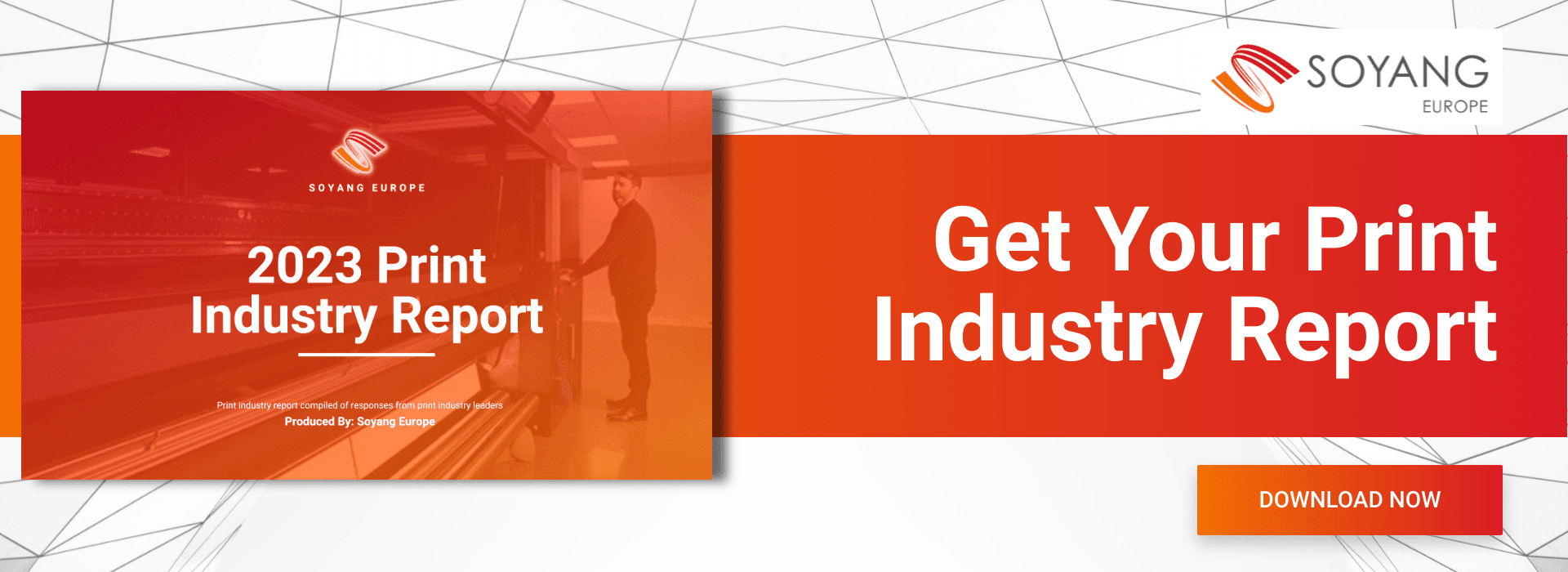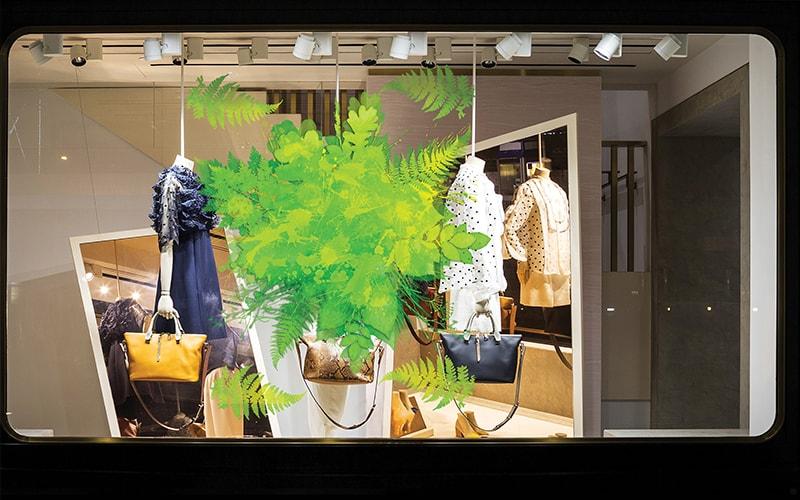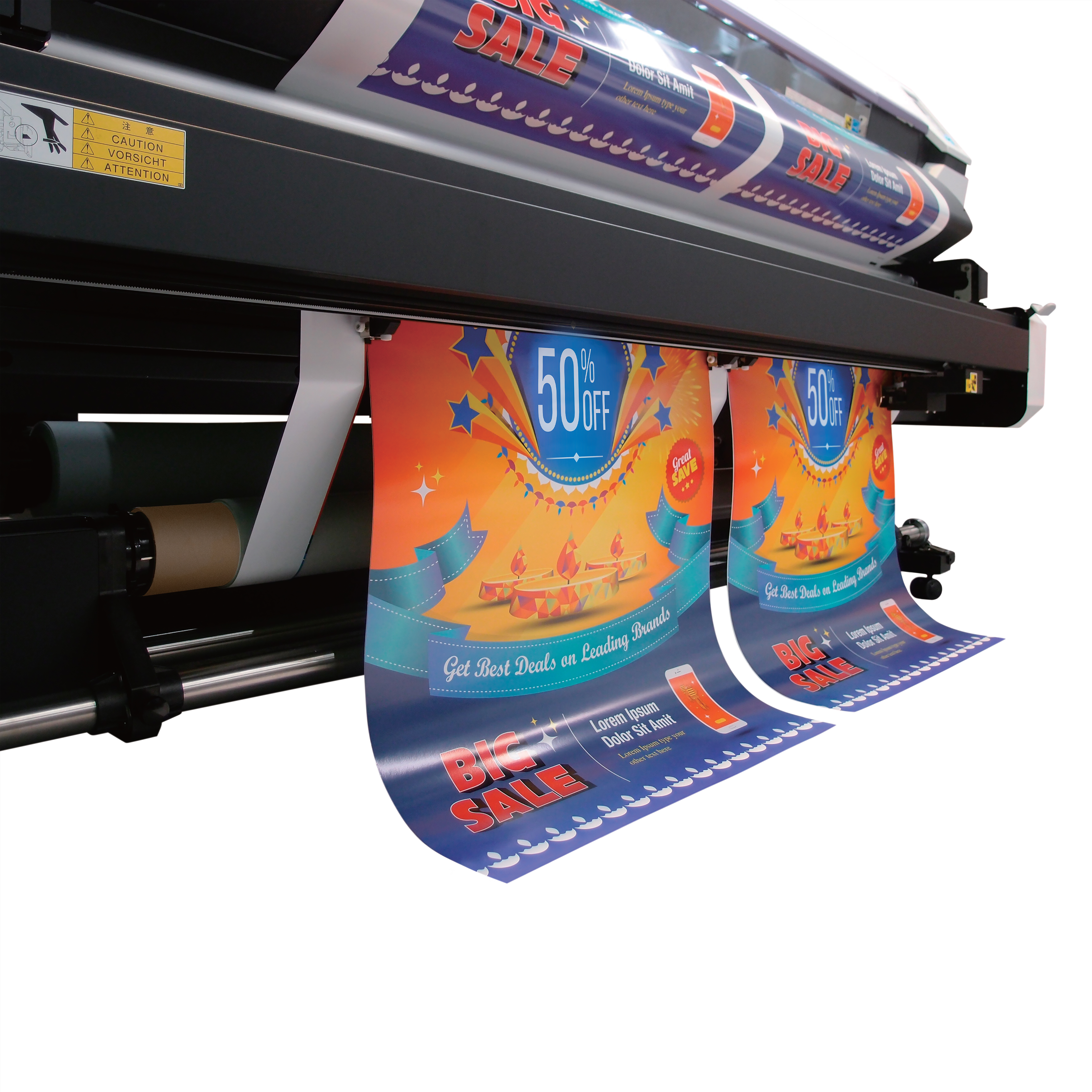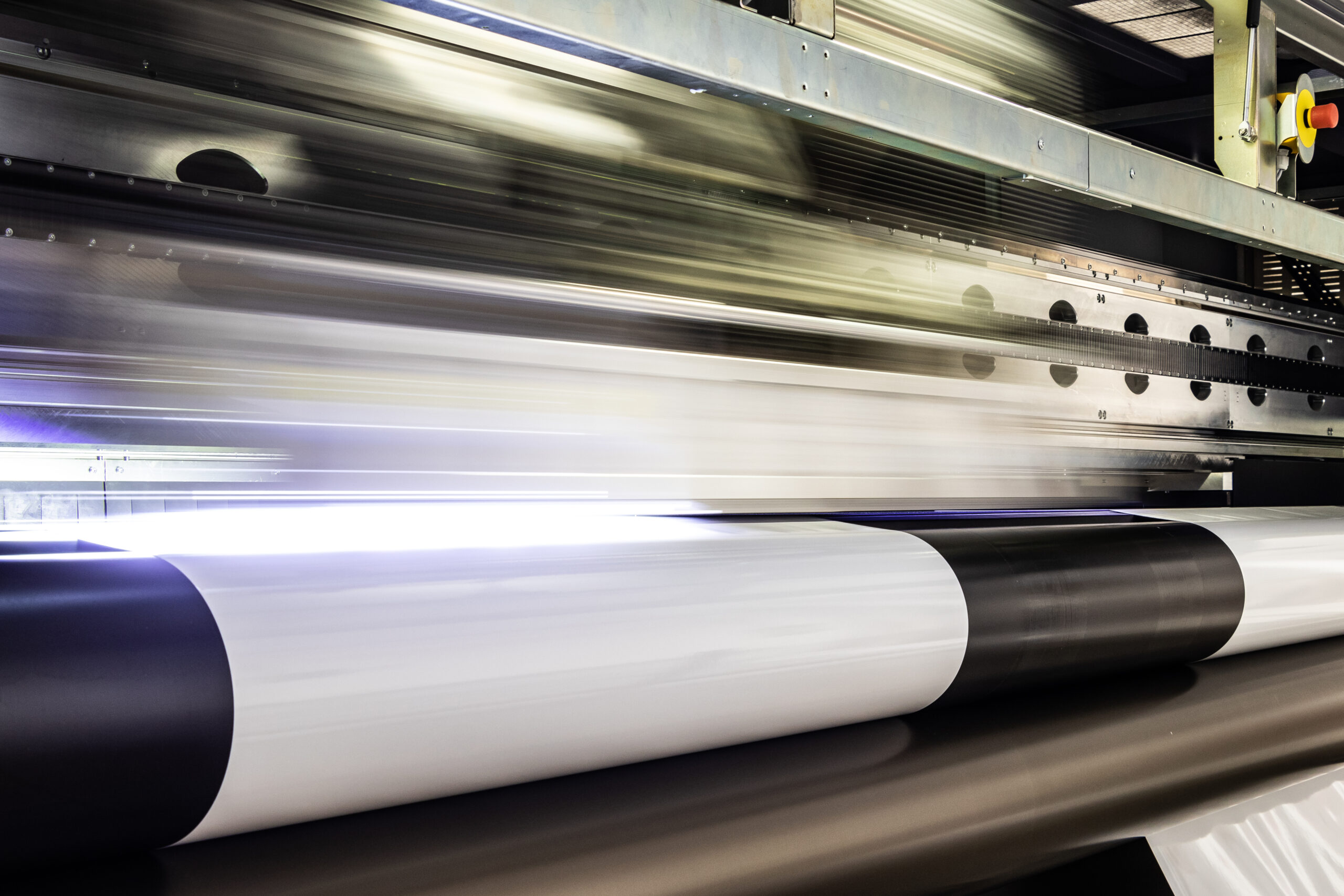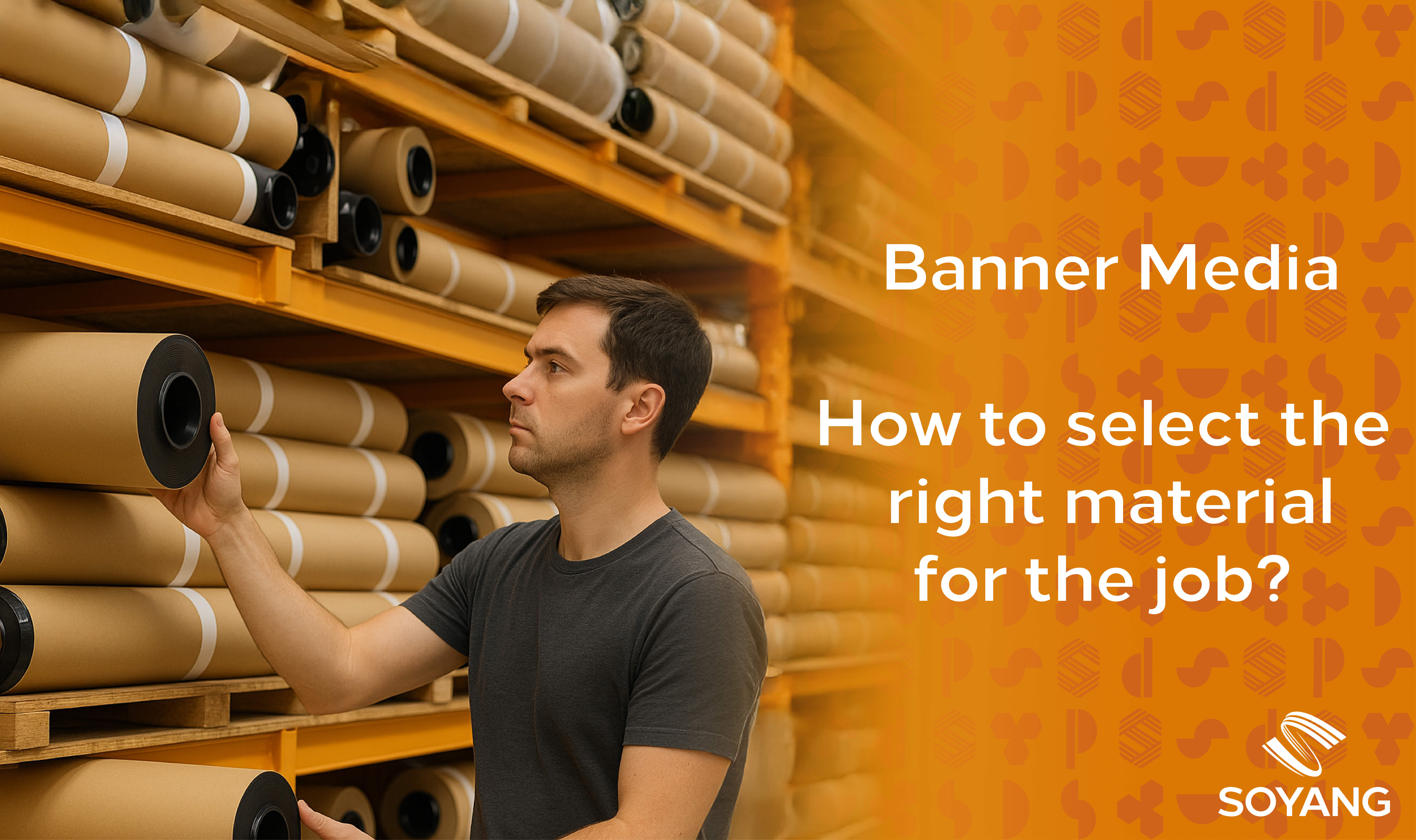Adhesive vinyl graphics are one of the most versatile printing options for marketing and advertising applications. Large format printing promotes product placement and your branding message to be displayed loud and clear, and centre stage. Both flexible and removable it is a go-to option for printing vivid graphics with minimal installation. This is a guide to your adhesive vinyl printing options.
What is Large Format Adhesive Vinyl Printing?
Adhesive vinyl is exactly what it sounds like. It is a vinyl sticker, the kind with the backing paper you remove before placing it on the window or other surfaces. Large format adhesive vinyl printing is the same, except on a much bigger scale.
Adhesive vinyl is a flexible PVC substrate that comes with a self-adhesive backing. Because it is waterproof, it can be used in both interior and exterior environments.
Large format adhesive vinyl can be applied directly to wall or window surfaces or mounted onto a rigid substrate to create large signs for commercial and advertising purposes and impressive window decals. The backing layer can be grey or black which can also be used to effectively block out existing images. For print signs on windows these vinyl prints can come clear or white backed.
Static cling
A static cling adheres to both glass and metal using the power of static attraction. It can be installed and removed easily when required and is usually made with either a white or clear backing and finish.
Cast or self-adhesive
Self-adhesive cast vinyl encompasses multiple layers, so it makes it easier to apply to curved surfaces. A useful option for irregular wall spaces or vehicle wraps.
Monomeric adhesives
Monomeric adhesive vinyls are designed for flat surfaces. This adhesive vinyl can be used for most applications and provide medium-term lifespan offering value for money.
Polymeric adhesives
The big difference between polymeric adhesives and monomeric adhesives is that polymeric uses longer chain molecules to bind the vinyl. This makes them stronger, more flexible and more durable too.

When and Where to Use Adhesive Vinyl Printing
The different inks and printers available allow adhesive vinyl to be used in almost any signage format and printed graphic solution, in almost every environment. The increased demand for both temporary and permanent graphic placements has ensured large format digital vinyl printing is at the centre of commercial branding.
Wall graphics and stickers
- Wall murals
- Privacy screens
- Brand graphics and displays
- Printed brickwork
- Vinyl floor stickers
Window graphics
- Transparent signs
- Special effect graphics
- Promotional decals
Vehicle wraps
- Fleet branding
- Full panel graphics
Indoor and outdoor signage
- Retail signage
- Overlaminate sign solutions
- Tradeshow popups
Compatible Inks for Large Format Vinyl Printing
There are four types of ink that are compatible with adhesive vinyl printing, they are solvent & eco-solvent, latex, aqueous and UV. In addition to this there are also essentially two types of media that adhesive vinyl can print on, either coated or uncoated. However, this is only important if the type of ink used requires a coated media.
Solvent & Eco-solvent
Solvent inks are used on a wide range of media and is a popular choice for using with commercial signs or outdoor banner uses. The combination of heat and chemical agents used in this process allow the ink to penetrate into the media to provide long-lasting and vibrant colour surfaces.
The wide range of compatible vinyls suited to this type of ink include adhesive vinyl products like outdoor signage, wall vinyl, vehicle wraps and high tack vinyl for window decals and product banners. One of the big benefits of using solvent and eco-solvent products is that the curing process allows it to be well-protected against the sun’s UV radiation which can cause other ink types to fade or even delaminate over time.
Latex
Latex is a water-based ink that needs to use very high temperatures for the liquid to evaporate and the ink to solidify onto the surface of the print media. Most latex vinyl printing are equally as compatible and long-lasting as solvent printing when used for exterior surfaces exposed to the elements.
However one of the biggest concerns over using latex printing for large format adhesive vinyl is the same high temperatures it uses to cure the ink can also risk warping or distorting the media.
UV
While UV ink usually works better with rigid, non-flexible media and substrates, this doesn’t mean it isn’t possible for flexible adhesive vinyl products. It’s most desirable feature is that it cures hard and is abrasion resistant almost instantly, which also often means it becomes inflexible.
Flexible UV ink might be more expensive than normal UV inks, but it has characteristics that make them ideal for using when stretching, bending and even folding is necessary and especially suited to using on windows and internal wall surfaces.
Aqueous
With aqueous inks being water-based the ink does not dry, meaning it needs to be coated with an additional laminate film to avoid puddling or run-off of the ink and with prolonged exposure outdoors colours can fade quickly.

Benefits of Large Format Adhesive Vinyl
Print quality – The wide choice of inks allow for graphics to be printed in high quality and with vivid colours, suitable for high resolution logos and imagery.
Durability – They also come in a range of finishes too, from unlaminated gloss and matt to post lamination coatings that extend the product life.
Versatility – The real advantages of adhesive vinyl is in its versatility. It can be applied to almost anything, including wood, aluminium, brickwork, plastic, glass and metal. Basically, anywhere in a commercial or retail setting.
Conclusion
Whatever large format print technology you use to print, whether this is UV, latex, solvent or aqueous, then using adhesive vinyl products will probably be a high priority. When adhesive vinyl this guide should give you more information of what his technology is about and where to best utilise one of the most flexible printing products for your next project.
